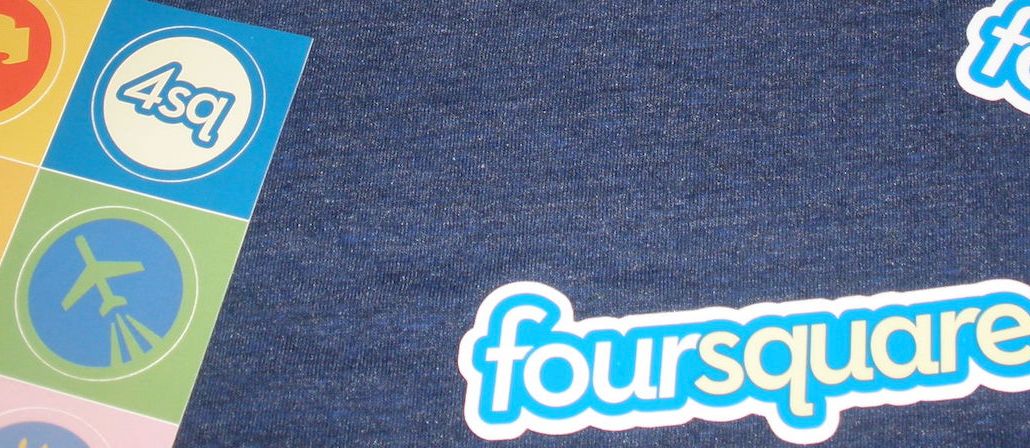‘We are not trying to have a billion users’: With hype faded, Foursquare tries reinvention as a data business

It was tantalizing news that hit CNBC, Politico and The Washington Post last week: Since Donald Trump announced his run for president, fewer people have been visiting his hotels, casinos and golf courses. The source of this tasty piece of data: Foursquare.
Foursquare crunched the Trump properties’ data as a marketing ploy to show off its newest iteration: as a data repository for real-world movement that can answer the question of whether ads result in activity in the real world. It’s a potentially lucrative niche and a long way from the ambitions of a company that burst on the scene in social check-ins, promising to “gamify” the world by getting people to compete for badges and points for badges.
“We are not in the same business like Facebook and Twitter as we are not trying to have a billion users,” said Foursquare president Steven Rosenblatt. “We want to build a consumer-based foot-traffic panel.”
While written off by many as a fad of a bygone era, Foursquare has been quietly building an enterprise business out of its consumer data collected from users. Its trove of data holds promise, according to several agency executives, although there are still doubts Foursquare faces as the “check-in” app.
The cornerstone of Foursquare’s strategy is that it has a database contains around 105 million places and 85 million commercial venues all around the world. Foursquare now gives 50 million users of its Swarm check-in app and Foursquare recommendations app without them actively checking in — and that means it’s collecting lots of data.
“Every time you check in, we capture all the sensors like the Wi-Fi, the Bluetooth and the beacons,” Rosenblatt said.
The platform lets other tech companies — including Twitter, Apple, Uber and Samsung — integrate its API for location accuracy. “This is a smart move because every time when you use Uber (and Instagram not a long time ago), you are feeding back your location signals to Foursquare, which reinforces its position as a data company,” said Tom Kelshaw, director of creative technology for agency Maxus.
Meanwhile, Foursquare uses data to help marketers find those who frequently go to luxury hotels or fast-food restaurants, and it provides subscription-based software for hedge funds to analyze businesses and retailers to figure out if their online advertising drives people to physical stores.
Still, Foursquare looks like a “business in search for a model that can help justify the amount of money they raised,” said one marketer. “Every year in the past four years, they tried to reposition the business,” the marketer noted. “They were a social app at the very beginning, and then they said that they were more of a data company last year. And now, they are an amazing location intelligence platform. If a company is pivoting itself every year, there’s something going on.”
While Maxus’s Kelshaw thinks that Foursquare has much potential in solving the attribution puzzle, he agreed that Foursquare has a “pivot problem,” adding that one challenge the company is facing is how to convince agencies to use its products.
“They’ve chosen an unsexy space to reinvent the business. At the end of the day, you buy reports and graphics, so I’m not sure if other advertisers are willing to pay lots of money on them,” he said. “Attribution is a strategic product rather than a campaign-based product, and it’s intangible. If you buy Facebook or Snapchat ads, you can actually see them. So for advertisers in general, Foursquare’s products may not be seen as sexy as Snapchat lenses, for example.”
The unnamed marketer also pointed out that Foursquare has a decent number of users in the U.S., Turkey and Brazil. Outside of these three markets, however, its user base is flat or declining.“The only people I know who are using Foursquare today are those who are either working for the company or used to work there,” he said. “If their apps are not being used, their data sources will dry out.”
The performance of Foursquare’s two social apps is mediocre. In the U.S., Foursquare ranks among the top 40 in the food and drink category on iOS, and the top 60 in the Travel and Local category on Android. While Swarm ranks within the top 250 for downloads consistently since its launch in the Social Networking category on iOS, and Top 200 on Android, according to App Annie.
Foursquare raised $45 million in a new round of venture funding this year, at nearly half of what it was valued at in its last round in 2013. The company has around 200 full-time staffers with over 40 key hires in 2016, and it made a few senior-management changes back in January: Jeff Glueck, its chief operating officer for the past year and a half, replaced its CEO and co-founder Dennis Crowley, while Rosenblatt was promoted from chief revenue officer to president.
“We have a real business. You can count on one hand the companies that have the hype that are still in business,” said Rosenblatt. “I think everyone is talking about us the same way they are talking about Snapchat — they completely missed what we’ve been doing over the past four years.”
More in Media

A timeline of the major deals between publishers and AI tech companies in 2025
Here’s a list of all the major deals signed between publishers and AI tech companies in 2025.

No playbook, just pressure: Publishers eye the rise of agentic browsers
For the bulk of publishers, Google is, as ever, the one to watch. It’s already got agentic features within its Chrome browser, but that’s the tip of the iceberg, some say.

The biggest SEO lessons in 2025 for publishers
KPIs are changing, more AI search data is becoming available, and publishers are looking beyond search to grow their audiences and revenue.





